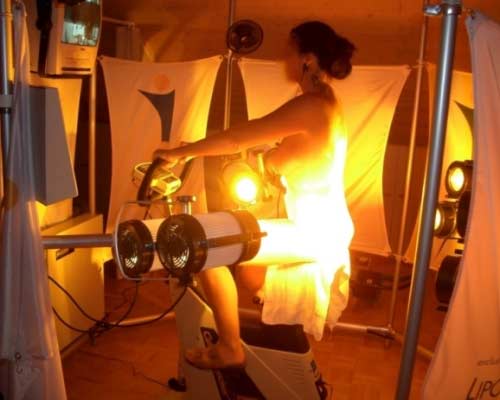Weight Loss Light Therapy
Red light therapy for belly fat
* Information supplied in this article is sourced directly from the supplier: Red Light ManBenefits Summary
- * Reduces appetite
- * Improved fat loss locally and systemically
- * Improved energy levels
- * Maintains lean tissue
- * Non-invasive
How does light aid weight loss?
Light therapy, particularly natural sunlight, has always anecdotally made people feel healthier and more energetic. The wholesome benefits of light are highlighted by the fact that many pre-historic cultures worshipped the sun. The positive influence of light can’t solely be accounted for by vitamin d production; in fact a more significant effect comes from red and near-infrared light. These wavelengths of light from 600-1000nm have direct effects on the metabolism of the body by interacting with the energy producing parts of our cells. As energy intake and output are inextricably linked to weight management, the link is clear.Mechanism
Bioenergetics – The mechanism of light therapy for weight loss is quite simple – it increases metabolic rate. As mentioned in our descriptions of red and infrared light, light therapy stimulates our mitochondria (the cell’s power source) to increase glucose oxidation. This is because light between 600nm and 1000nm stimulates a key copper enzyme in our cells. This inevitably results in more ATP, or cellular energy, being produced. More glucose burned efficiently means less stress, and healthier cells, which results in a stronger metabolic rate – ultimately leading to fat loss. While other agents such as thyroid hormone have a similar ATP enhancing effect, this red light driven oxidative metabolism (efficiently turning glucose into carbon dioxide) is the key principle in keeping a high metabolic rate, as opposed to the stress metabolism of cortisol, adrenaline, free fatty acids, etc. It has been shown scientifically for over 50 years that prolonged dieting and stress lowers the metabolic rate. In one controlled study, long term dieters were shown to have a stable weight on only 700 calories a day, whereas a healthy metabolic equilibrium is more like 3000 calories eaten and burned a day. Anyone who has been on repeated low calorie or low carb diets, or been through periods of stress, will have a diminished metabolic rate. Red and infrared light helps to work against this, providing a healthy boost to energy, and a buffer against stress. Blood flow – In addition to the metabolic boost we see, red and infrared light also improves blood flow in the area it is applied. This vasodilatory effect is due to red light wavelengths photodissociating nitric oxide molecules from respiratory enzymes. This means that cells cannot only produce more energy, but also have more blood flow providing essential nutrients like glucose. So called spot reduction fat loss (targeting one area you want to lose fat, such as abs, buttocks) is commonly viewed as a myth amongst most health and fitness experts. Those that do accept it see the impact as negligible – basically most people lose fat evenly around their body, even if they primarily exercise one area (i.e. you only get a 6 pack by having a low overall body fat, not by doing sit-ups every day). The vasodilatory & pro-metabolic effects of red and infrared light provide a new mechanism for spot reduction in fat, providing a specific localised boost in metabolism, and in fact there are studies showing this.Evidence
A recent study by the University of Sao Paulo (Sene-Fiorese. 2015) showed a doubling of the rate of fat loss when combined with light therapy. The light used was infrared and applied immediately after weight training. Another study in 2014 (Kathryn J. Reid et al.) measured average light exposure and body weight, as well as other specifics such as light timing. They showed how light as a positive influence of weight, regardless of sleep quality.
